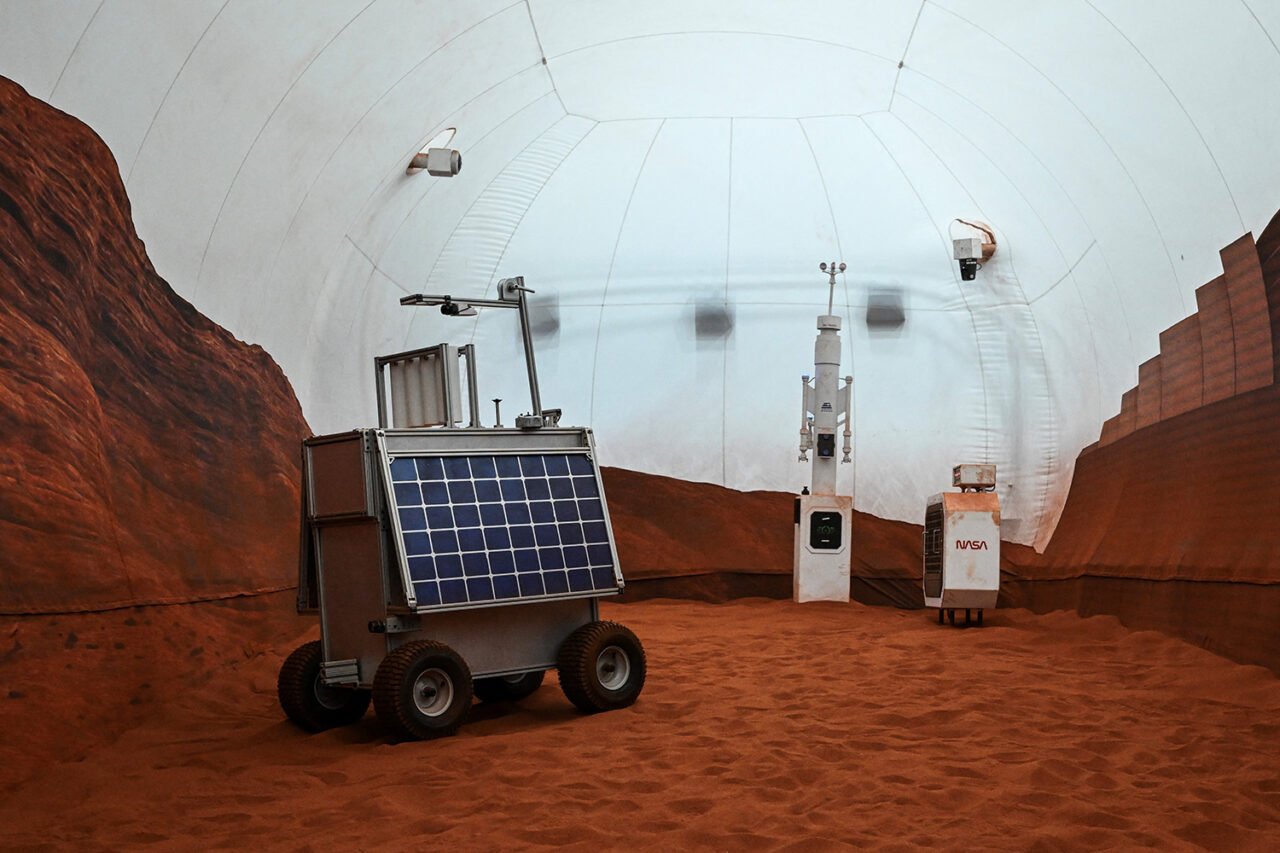Science
NASA Conducts Groundbreaking Space Simulations at CHAPEA Facility

NASA is pioneering new methods to study human spaceflight through analog missions at the CHAPEA facility located at the Johnson Space Center in Houston, Texas. These missions allow scientists to simulate space conditions without requiring a launch into orbit. The goal is to better understand the impacts of long-duration space travel on astronauts and to prepare for future missions to destinations such as Mars.
The CHAPEA (CHAllenge for Planning and Execution of Activities) program involves a series of carefully structured analog missions where participants live in a confined environment that mimics a space habitat. This approach provides researchers with invaluable data on how humans adapt to the physical and psychological challenges of spaceflight.
During these missions, crews undergo rigorous training and experience scenarios that simulate the isolation and resource limitations of space. The latest mission, which took place over a four-month period, involved a team of four individuals who were tasked with conducting scientific experiments, performing maintenance, and managing their daily lives in a confined setting.
Understanding the Human Element in Space Travel
According to NASA, the insights gained from these missions are crucial for future exploration efforts. With plans to send humans to Mars in the 2030s, understanding the long-term effects of space travel on human health and performance is essential. The CHAPEA program helps to identify potential risks and develop strategies to mitigate them, ensuring the safety and success of astronauts.
The analog missions also simulate various mission scenarios, including emergency situations that could arise during actual space missions. This comprehensive training prepares the crew to respond effectively and maintain their well-being while facing the stresses of living in an enclosed environment. The data collected will inform not only future missions but also contribute to the broader understanding of human psychology in extreme conditions.
Budget-Friendly Innovation in Space Research
One of the significant advantages of utilizing analog missions at facilities like CHAPEA is the cost-effectiveness compared to traditional space missions. By recreating space conditions here on Earth, NASA can conduct extensive research without the financial burden associated with rocket launches. This innovative approach allows for ongoing studies that can be adapted and repeated as new challenges arise in space exploration.
NASA’s commitment to advancing human spaceflight through such initiatives reflects a broader strategy to enhance our understanding of space and its effects on human physiology. As the agency moves forward with its plans for lunar exploration and beyond, programs like CHAPEA will continue to play a vital role in preparing for the challenges of interplanetary travel.
In summary, NASA’s CHAPEA facility is at the forefront of simulating space conditions right here on Earth. These analog missions provide critical insights into human spaceflight, ensuring that future astronauts are well-prepared for the challenges they will face on long-duration missions. With a focus on innovation and cost-effectiveness, NASA is setting the stage for the next era of space exploration.
-

 Politics5 days ago
Politics5 days agoLB Pharmaceuticals Quiet Period Ends October 21, Analysts Weigh In
-

 World5 days ago
World5 days agoExposing the Reality Behind Guatemala’s Garment Industry
-

 Sports5 days ago
Sports5 days agoSaquon Barkley Reflects on James Franklin’s Dismissal from Penn State
-

 Business5 days ago
Business5 days agoRoyal Bank of Canada Upgrades Ovintiv to Outperform Rating
-

 Health5 days ago
Health5 days agoFDA Announces First Nine Recipients of National Priority Vouchers
-

 Science3 days ago
Science3 days agoYale School of the Environment Launches Accelerated Master’s Programs
-

 World5 days ago
World5 days agoHamas to Return Remains of Additional Hostage on Friday
-

 Science5 days ago
Science5 days agoMIT Develops 3D Brain Models from Patient Cells for Custom Therapies
-

 Entertainment5 days ago
Entertainment5 days agoOlivia Nuzzi’s Memoir Set to Uncover RFK Jr.’s Controversial Texts
-

 Lifestyle3 days ago
Lifestyle3 days agoHistorian Seeks Help to Uncover Cherry Street’s Past
-

 Entertainment5 days ago
Entertainment5 days agoSylvester Stallone’s ‘Alarum’ Surges in Streaming Despite Poor Reviews
-

 Lifestyle5 days ago
Lifestyle5 days agoSouth Los Angeles Intersection Renamed to Honor Activist Danny Bakewell Sr.







